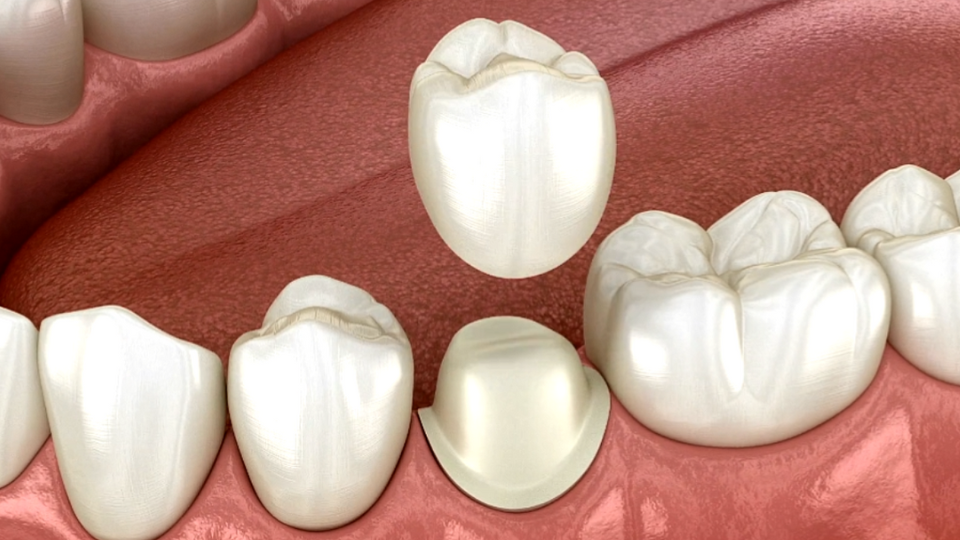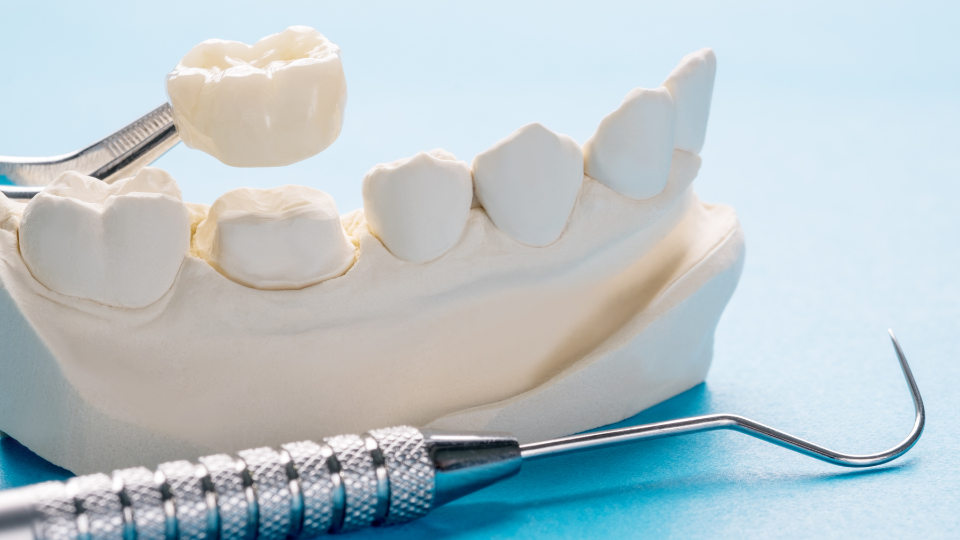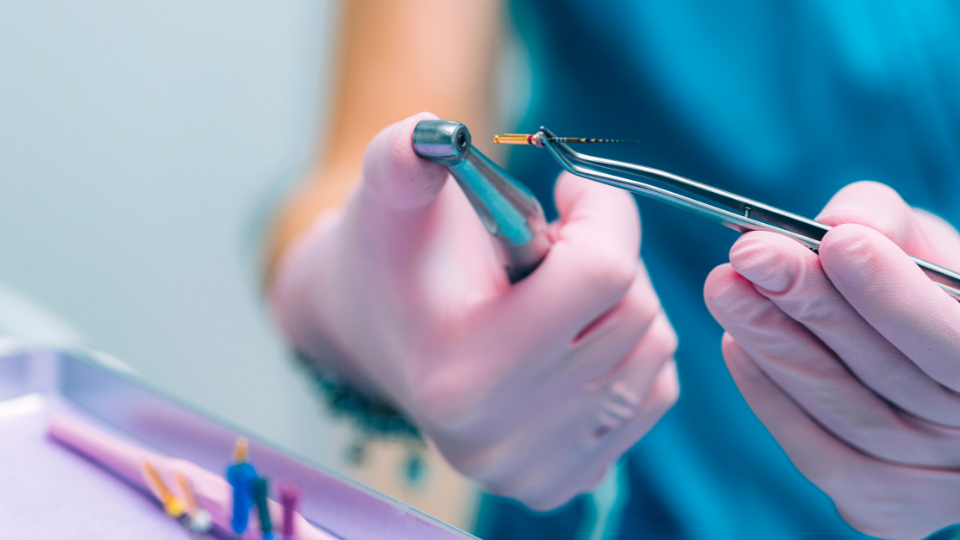What to Expect During “Getting a Tooth Pulled” Surgery

How Much is a Dental Extraction?
February 29, 2024
How Does a Dentist Extract a Tooth? A Step-by-Step Guide
February 29, 2024What to Expect During “Getting a Tooth Pulled” Surgery
 Dr. Prashant Rao, DDS, a Charlotte native and NYU-trained dentist, specializes in esthetics, dental implants, and preventative dentistry.
Dr. Prashant Rao, DDS, a Charlotte native and NYU-trained dentist, specializes in esthetics, dental implants, and preventative dentistry.
Key Takeaways:
Understanding Types of Tooth Extractions:
This article distinguishes between simple and surgical tooth extractions, with simple being performed on visible teeth above the gum line, using local anesthesia only when necessary. Conversely, surgical extractions involve procedures requiring incisions, bone removal, and sometimes sutures. Understanding what to expect during both types of procedures will allow patients to make an informed decision when it comes time to undergo their procedure and recover afterward.
Prep and Recovery:
This blog explores the preparation and recovery processes associated with both simple and surgical extractions. Before surgery, patients receive consultation from their dentist regarding potential complications; following extraction patients may experience soreness, swelling, and minor bleeding which can be managed with cold packs, pain medication, or good oral hygiene practices; following your dentist’s aftercare instructions can promote healing while decreasing risks such as infection or dry socket.
Questions to Ask Your Dentist:
This article presents a list of queries patients should pose to their dentist before having a tooth extracted, including questions regarding the type of extraction, potential risks, and complications, what to expect during and post-procedure recovery as well as ways to alleviate discomfort during recovery. By being more informed and prepared for their dental appointments by asking these pertinent questions and having a clear understanding of the process overall.
Are you thinking about getting your teeth extracted but are worried about the expense and recuperation time? We will go over all you need to know about dental extractions in this article. Follow along to find out more about the healing process and how you may support your recovery.
Is Tooth Extraction Considered Surgery?
There are two sorts of tooth extractions: basic and surgical. A simple extraction occurs when a tooth is visible above the gums and a dentist may remove it in one piece. A surgical extraction, on the other hand, is more involved and requires the removal of either gum tissue or bone. The procedure required is determined by the unique case and the state of the tooth in issue.
Simple extraction
A simple extraction is a basic treatment for teeth that are visible and accessible above the gum line. The dentist uses specialized instruments to dislodge the tooth from the socket and extract it intact. Simple extractions usually require only local anesthesia to numb the area and can be completed quickly by a regular dentist. These procedures are typically rapid, minimally invasive, and do not require sutures or post-operative problems.
Surgical extraction
In contrast, surgical extractions are difficult procedures performed on teeth that have not fully erupted or have broken off at the gum line. These treatments necessitate gum incisions and the removal of bone to gain access to the tooth. Because of their complexity, surgical extractions are performed by oral surgeons under local anesthetic and may necessitate sutures to close the extraction site. Because these treatments are more intrusive, effective recovery requires post-operative care, pain management, and complication monitoring.
An extraction’s surgical status depends on the procedure and tooth involved. Basic extractions are modest, while minor oral surgery involves incisions and bone removal. The dentist’s skills and techniques are crucial for safe, effective, and minimal patient discomfort. Adherence to pre-and post-operative instructions promotes maximum healing and recovery.
Whether a tooth extraction is classified as a basic procedure or a minor surgery is determined by the intricacy of the therapy required to remove the tooth in question. The best method to determine what to expect during and after a tooth extraction is to consult with a dentist about the available options and the specifics of the surgery. With the right care and pain treatment, most patients recover comfortably from both routine and surgical extractions.
Simple Tooth Extraction Explained
A simple tooth extraction is the removal of a visible tooth above the gums. To reduce discomfort during this operation, the dentist will use a local anesthetic to numb the area around the tooth. Once anesthetized, the dentist will use extraction forceps to gently move the tooth back and forth to dislodge it from its socket. The tooth is then taken out.
Preparing for a Simple Extraction
Before the treatment, you will visit your dentist for a consultation to discuss the extraction and any concerns you may have. Your dentist will examine the tooth to see if any aggravating circumstances would necessitate a surgical extraction. A thorough medical history and medication list is required for your protection. Follow your dentist’s advice for fasting or medication modifications.
What to Expect During the Procedure
Using a syringe, the dentist will apply local anesthesia to the area surrounding the tooth to be extracted. You will feel pressure, but not pain. The dentist will next grab the tooth with forceps and gently rock it side to side to dislodge it. Once the tooth is loose, the dentist will remove it from the socket. Minor bleeding is typical and will be decreased. The dentist may apply gauze to the extraction site to reduce bleeding and promote clot formation.
Recovery and Aftercare
It is typical to feel some soreness and swelling in the days after an extraction. Apply cold packs to your cheeks for 10-20 minutes at a time to reduce swelling. When lying down, support your head with an extra pillow. Brush your teeth softly around the extraction site, avoiding the actual socket. Use over-the-counter pain relievers as prescribed by your dentist. Avoid strenuous activities during the first few days. Call your dentist if you have severe bleeding, pain, or swelling that does not improve within 3 to 5 days. If necessary, see your dentist to have your sutures removed. Proper aftercare promotes recovery while lowering the risk of infection or dry socket.
Surgical Tooth Extraction Explained
The Complex Procedure
A surgical tooth extraction is a more extensive operation that necessitates the removal of gum tissue, bone, or both to reach and extract the tooth. Before beginning the treatment, a local anesthetic is injected to numb the area. The dentist will then use surgical instruments to cut and retract the gums, exposing the entire tooth and root. In some circumstances, bone must be removed to get access or detach the tooth from the surrounding bones. Once exposed, the dentist will use extraction forceps to remove the tooth with a gentle rocking motion.
Suturing the Site
After the tooth is pulled, the dentist will rinse the socket to eliminate any debris before closing the incision site with dissolvable stitches. The sutures assist the gums in healing over the extraction site as they recuperate. In some circumstances, the dentist may insert bone grafting material into the socket to assist preserve bone volume before suturing the gums.
What to Expect Following Surgery
After a surgical extraction, there will be considerable soreness, swelling, and bruising that may linger for many days. The dentist will provide specific post-operative advice to help promote healing and limit the chance of problems. Limit activity during the first few days, use ice packs as instructed, and get plenty of rest. If necessary, the dentist will give pain medication and may recommend an antibiotic to keep the gums from infecting while they heal. Stitches usually disintegrate on their own in 3 to 14 days. Patients should schedule a post-operative appointment with their dentist to monitor their healing.
Possible Complications
A surgical tooth extraction, like any other medical surgery, has some risk of consequences. The most common consequences include dry sockets, infections, and persistent bleeding. Patients should call their dentist immediately if they experience severe or worsening discomfort, pus, or excessive bleeding during the recovery period. With adequate aftercare and careful adherence to the dentist’s recommendations, the risks of problems are low, and recovery will proceed as predicted.
How Long Does a Tooth Extraction Take
A tooth extraction can take anywhere from 20 minutes to more than an hour, depending on the complexity of the treatment and the patient’s specific situation. Simple extractions of fully visible teeth with single roots normally take the shortest amount of time. Surgical extractions of impacted or shattered teeth, which require cutting into gum tissue and bone removal, take the most time.
Simple Extractions
For teeth that are visible above the gums and have single roots, the surgery is usually short, lasting 20 to 45 minutes. To ensure the patient’s comfort, the dentist will apply local anesthetic to the area surrounding the tooth. Once numb, the dentist will grab the tooth using extraction forceps and gently rock it back and forth to expand the socket before removing it in one piece. Simple sutures or gauze are frequently used following extraction to stop bleeding and initiate the healing process.
Surgical Extractions
Surgical extractions of impacted, diseased, or shattered teeth include cutting into the gum tissue and perhaps removing bone to access the tooth. This process can take anywhere from 30 minutes to more than an hour, depending on the circumstances. The dentist will numb the region before creating an incision in the gums to reach the tooth. To fully view and remove the entire tooth, parts of the bone may need to be removed. To reduce bleeding and enhance healing after tooth extraction, more elaborate suturing and packing are required.
The overall time required is highly dependent on the patient’s specific circumstances and dental health. It is important to allow extra time for a surgical extraction in case the treatment takes longer. During the initial appointment, the dentist will assess the specific tooth and provide an accurate timeline for the next procedure. Following all pre-and post-operative care instructions properly reduces discomfort and speeds up healing. With time and adequate care, the extraction site will heal, allowing the patient to resume normal activities.
Common Side Effects Following a Tooth Extraction
Pain and Discomfort
Patients who have had a tooth extracted frequently report pain, swelling, and discomfort in the treated area. Using over-the-counter or prescribed pain medication can assist in alleviating discomfort during the initial healing process. Applying ice packs to the cheek around the extraction site reduces swelling and pain. Patients should discuss suitable pain treatment choices with their dentist, taking into account the complexity of the surgery.
Bleeding
Minor bleeding from the extraction site is common and lasts about 1 to 2 hours after the procedure. Patients are recommended to bite down forcefully on gauze pads to provide pressure to the affected area for 30 to 45 minutes. For the first day, the saliva in the mouth may be red. If the bleeding continues for more than a few hours, you should see a dentist.
Infection
Although uncommon, an infection can develop at the extraction site if correct aftercare is not followed. Infection symptoms include increasing pain, edema, fever, and foul-smelling discharge from the affected area. Antibiotics may be recommended if an infection occurs. Patients should keep an eye on the extraction area for the first few days after the treatment and report any unusual symptoms to their dentist right away.
Questions to Ask Your Dentist about Tooth Extractions
Which type of tooth extraction will be performed?
There are two forms of tooth extraction: basic and surgical. A simple extraction occurs when a tooth is visible above the gums and a dentist may remove it in one piece. A surgical extraction is more complex, requiring the removal of gum tissue, bone, or both. The dentist will choose the best procedure depending on the tooth’s position and condition, as well as the patient’s dental and medical history. Patients should be aware of the specifics of the recommended procedure before providing consent.
What are the dangers involved with the procedure?
While tooth extractions are common dental treatments, there are certain dangers to consider, including infection, dry sockets, damage to surrounding teeth, and nerve damage. The dentist should discuss the possibility of hazards and complications based on the patient’s specific circumstances. Patients should ask inquiries if they have any concerns about dangers. Understanding the risks enables patients to make an informed treatment selection and be prepared in case issues emerge throughout the recovery process.
What to expect during and after the procedure?
Knowing what to expect during and after a tooth extraction can assist in reducing anxiety and ensure optimal preparation. Patients should ask the dentist to walk them through the process of what will happen from the time they arrive until they leave the dental clinic. They should also be aware of common post-operative symptoms, pain management approaches, dietary restrictions, oral hygiene habits, and follow-up care needs. Having a clear picture of the event from beginning to end will lead to a more efficient surgery and recovery.
How to alleviate discomfort?
While anesthesia is used to numb the area during the extraction, patients may experience discomfort, agony, and swelling for several hours or days after the treatment. Patients should consult their dentist for advice on medicines, cold compresses, dietary adjustments, and oral hygiene habits to reduce discomfort during recuperation. Following the dentist’s recommendations for pain management measures will promote recovery and lower the chance of preventable problems. Patients should also contact their dentist if they experience severe or prolonged pain that does not respond to approved treatment.
Frequently Asked Questions
What can I expect during a “Getting a Tooth Pulled” surgery?
During a “Getting a Tooth Pulled” surgery, you can expect to have a tooth or multiple teeth extracted by a dental professional.
Is the procedure painful?
The procedure itself is not painful as the area will be numbed with local anesthesia. However, you may experience some discomfort and soreness after the procedure.
Will I be able to eat after the surgery?
It is recommended to stick to soft foods for the first few days after the surgery. Avoid hard or chewy foods that may irritate the extraction site.
How long does the procedure take?
The length of the procedure can vary depending on the complexity of the extraction. On average, it can take anywhere from 20 minutes to an hour.
What are the aftercare instructions?
After the surgery, you will be given specific instructions on how to care for the extraction site. This may include avoiding certain activities, taking medication, and maintaining good oral hygiene.
What are the risks of getting a tooth pulled?
Like any surgical procedure, there are some risks involved such as infection, dry socket, and damage to surrounding teeth. However, these risks can be minimized by following proper aftercare instructions and choosing a skilled dental professional.
Schedule an appointment at Cedar Walk Dentistry to take the next step toward a more comfortable encounter. Our caring team is available to answer your concerns and provide individual help. Let’s work together to make your dental appointment as comfortable as possible. Contact us today to schedule your consultation and begin your process to a healthier smile.
Practice Recognitions
Recent Posts
- How Long Do Same-Day Crowns Last?
- Top Cosmetic Dental Procedures: Start 2025 With a New Smile
- What is a Zirconia Crown
- How To Know If You Need a Root Canal
- Invisalign FAQ: Your Top Questions Answered!
- Invisalign vs. Smile Direct: What Is The Difference?
- Itchy Gums: Causes, Relief, and Prevention
- The Benefits of Dental Implant Surgical Guides
- Wisdom Teeth Removed: 5 Signs You May Need to Remove Yours
- Tips For Wisdom Teeth Pain Relief: All You Need To Know




